Allison Transmission AT500, AT1500 Service Manual
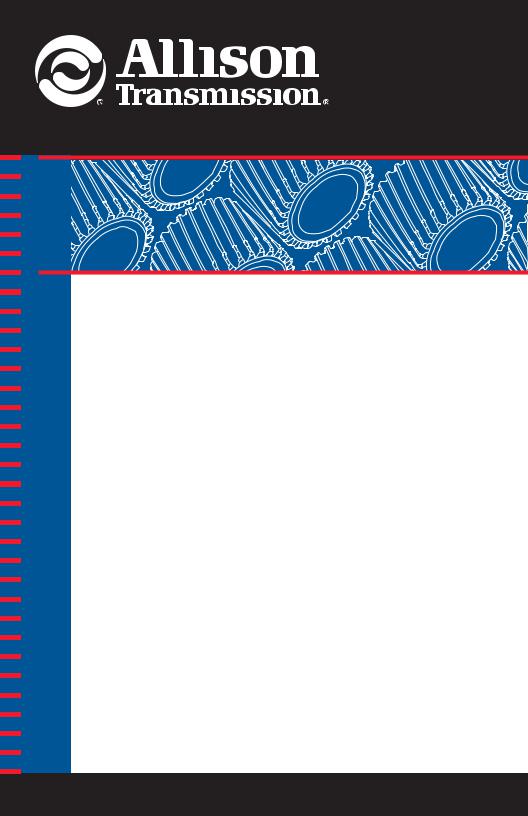
Mechanic’s Tips
AT 500 and AT 1500
Series Transmissions
MT1321EN
MT4108EN

MT1321EN
Mechanic’s
Tips
Allison Transmission
AT 540, AT 543
AT 542, AT 542N, AT 542R, AT 542NR
AT 545, AT 545N, AT 545R, AT 545NR,
AT 542NFE
AT 1542, AT 1542P, AT 1542NP
AT 1545, AT 1545P, AT 1545NP
June 1996
Revision 1, 1999 April
Printed in U.S.A. |
Copyright © 2007 Allison Transmission, Inc. |
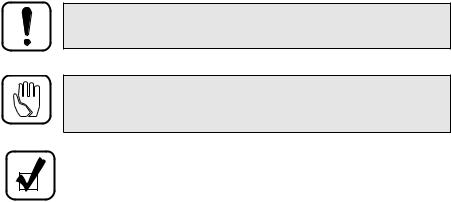
WARNINGS, CAUTIONS, AND NOTES
IT IS YOUR RESPONSIBILITY to be completely familiar with the warnings and cautions described in this handbook. It is, however, important to understand that these warnings and cautions are not exhaustive. Allison Transmission could not possibly know, evaluate, and advise the service trade of all conceivable ways in which service might be done or of the possible hazardous consequences of each way. Consequently, Allison Transmission has not undertaken any such broad evaluation. Accordingly, ANYONE WHO USES A SERVICE PROCEDURE OR TOOL WHICH IS NOT RECOMMENDED BY ALLISON TRANSMISSION MUST first be thoroughly satisfied that neither personal safety nor equipment safety will be jeopardized by the service methods selected.
Proper service and repair is important to the safe, reliable operation of the equipment. The service procedures recommended by Allison Transmission and described in this handbook are effective methods for performing service operations. Some of these service operations require the use of tools specially designed for the purpose. The special tools should be used when and as recommended.
Three types of headings are used in this manual to attract your attention. These warnings and cautions advise of specific methods or actions that can result in personal injury, damage to the equipment, or cause the equipment to become unsafe.
WARNING: A warning is used when an operating procedure, practice, etc., if not correctly followed, could result in personal injury or loss of life.
CAUTION: A caution is used when an operating procedure, practice, etc., if not strictly observed, could result in damage to or destruction of equipment.
NOTE: A note is used when an operating procedure, practice, etc., is essential to highlight.
ii
|
TABLE OF CONTENTS |
|
Paragraph |
Description |
Page |
Section I |
PREVENTIVE MAINTENANCE |
|
1–1 |
Periodic Inspection and Care . . . . . . . . . . . . . . . . . . . . . . . . . |
. . 1 |
1–2 |
Importance of Proper Fluid Level . . . . . . . . . . . . . . . . . . . . . . |
. 1 |
1–3 |
Dipstick Markings . . . . . . . . . . . . . . . . . . . . . . . . . . . . . . . . . . |
. 1 |
1–4 |
Fluid Check Procedure. . . . . . . . . . . . . . . . . . . . . . . . . . . . . . . |
. 3 |
1–5 |
Keeping Fluid Clean . . . . . . . . . . . . . . . . . . . . . . . . . . . . . . . . |
. 4 |
1–6 |
Recommended Automatic Transmission Fluid |
|
|
and Viscosity Grade . . . . . . . . . . . . . . . . . . . . . . . . . . . . . . . . . |
. 4 |
1–7 |
Fluid and Filter Change Intervals. . . . . . . . . . . . . . . . . . . . . . . |
. 5 |
1–8 |
Fluid and Filter Change Procedure . . . . . . . . . . . . . . . . . . . . . |
. 6 |
1–9 |
Fluid Contamination . . . . . . . . . . . . . . . . . . . . . . . . . . . . . . . . |
. 8 |
1–10 |
Auxiliary Filter. . . . . . . . . . . . . . . . . . . . . . . . . . . . . . . . . . . . . |
. 9 |
1–11 |
Breather . . . . . . . . . . . . . . . . . . . . . . . . . . . . . . . . . . . . . . . . . . |
10 |
1–12 |
Transmission Stall Test and Neutral |
|
|
Cool–Down Check . . . . . . . . . . . . . . . . . . . . . . . . . . . . . . . . . . |
10 |
Section II |
REMOVING TRANSMISSION |
|
2–1 |
Draining Transmission . . . . . . . . . . . . . . . . . . . . . . . . . . . . . . . |
13 |
2–2 |
Disconnecting Controls . . . . . . . . . . . . . . . . . . . . . . . . . . . . . . |
13 |
2–3 |
Uncoupling Engine From Driveline. . . . . . . . . . . . . . . . . . . . . |
14 |
2–4 |
Removing Mounting Bolts. . . . . . . . . . . . . . . . . . . . . . . . . . . . |
15 |
2–5 |
Removing Transmission . . . . . . . . . . . . . . . . . . . . . . . . . . . . . |
15 |
2–6 |
Repair Instructions . . . . . . . . . . . . . . . . . . . . . . . . . . . . . . . . . . |
15 |
Section III |
PREPARING TRANSMISSION FOR INSTALLATION |
|
3–1 |
Checking Input Components . . . . . . . . . . . . . . . . . . . . . . . . . . |
17 |
3–2 |
Checking Torque Converter Position. . . . . . . . . . . . . . . . . . . . |
17 |
3–3 |
Installing Parking Brake and Output Flange . . . . . . . . . . . . . . |
18 |
3–4 |
Installing Shift Selector Lever . . . . . . . . . . . . . . . . . . . . . . . . . |
19 |
3–5 |
Installing Power Takeoff (PTO). . . . . . . . . . . . . . . . . . . . . . . . |
20 |
3–6 |
Installing Shift Modulation Control . . . . . . . . . . . . . . . . . . . . . |
21 |
3–7 |
Installing Fill Tube and Drain Plug . . . . . . . . . . . . . . . . . . . . . |
22 |
3–8 |
Installing Neutral Start and Reverse Signal Switches . . . . . . . |
23 |
3–9 |
Installing Retarder Controls . . . . . . . . . . . . . . . . . . . . . . . . . . . |
23 |
3–10 |
Checking Breather . . . . . . . . . . . . . . . . . . . . . . . . . . . . . . . . . . |
24 |
iii
Paragraph |
Description |
Page |
Section IV |
PREPARING VEHICLE FOR TRANSMISSION |
|
|
INSTALLATION |
|
4–1 |
Checking Flexplate, Engine Features. . . . . . . . . . . . . . . . . . . |
. 25 |
4–2 |
Checking Chassis, Driveline . . . . . . . . . . . . . . . . . . . . . . . . . . |
27 |
4–3 |
Checking Cooler, Tubes, Hoses, Fittings. . . . . . . . . . . . . . . . . |
27 |
4–4 |
Checking Controls . . . . . . . . . . . . . . . . . . . . . . . . . . . . . . . . . . |
28 |
Section V |
INSTALLING TRANSMISSION INTO VEHICLE |
|
5–1 |
Handling. . . . . . . . . . . . . . . . . . . . . . . . . . . . . . . . . . . . . . . . . . |
29 |
5–2 |
Coupling to Engine . . . . . . . . . . . . . . . . . . . . . . . . . . . . . . . . . |
29 |
5–3 |
Installing Transmission Mounting Components . . . . . . . . . . . |
30 |
5–4 |
Coupling to Driveline. . . . . . . . . . . . . . . . . . . . . . . . . . . . . . . . |
31 |
5–5 |
Installing Vacuum or Air Modulator Control . . . . . . . . . . . . . |
31 |
5–6 |
Connecting Cooler, Vacuum Lines, Air Lines. . . . . . . . . . . . . |
32 |
5–7 |
Connecting Retarder Controls . . . . . . . . . . . . . . . . . . . . . . . . . |
32 |
5–8 |
Connecting Shift Selector Control . . . . . . . . . . . . . . . . . . . . . . |
33 |
5–9 |
Installing, Adjusting Mechanical Modulator Control . . . . . . . |
34 |
5–10 |
Connecting Power Takeoff Controls . . . . . . . . . . . . . . . . . . . . |
35 |
5–11 |
Connecting Parking Brake Control . . . . . . . . . . . . . . . . . . . . . |
35 |
5–12 |
Connecting Speedometer Drive . . . . . . . . . . . . . . . . . . . . . . . . |
35 |
5–13 |
Filling the Transmission. . . . . . . . . . . . . . . . . . . . . . . . . . . . . . |
36 |
Section VI |
CHECKS AND ADJUSTMENT |
|
6–1 |
Installation Checklist . . . . . . . . . . . . . . . . . . . . . . . . . . . . . . . . |
37 |
6–2 |
Road Test and Vehicle Operation Checklist . . . . . . . . . . . . . . |
40 |
Section VII |
CUSTOMER SERVICE |
|
7–1 |
Owner Assistance. . . . . . . . . . . . . . . . . . . . . . . . . . . . . . . . . . . |
42 |
7–2 |
Service Literature . . . . . . . . . . . . . . . . . . . . . . . . . . . . . . . . . . . |
44 |
iv
PREFACE
This handbook is a ready reference for the mechanic removing, installing, or maintaining AT Series Automatic Transmissions. All features of both the vehicle and transmission that become involved in the installation procedures are discussed. The information presented will help the mechanic to remove, install, and maintain the transmission in a manner that assures satisfactory operation and long service life.
TRADEMARKS USED
DEXRON® is a registered trademark of General Motors Corporation
Loctite® is a registered trademark of the Loctite Corporation
Teflon® is a registered trademark of the DuPont Corporation
v

Model AT 542 Transmission — Left-Front View
Model AT 545 Transmission — Right-Front View
Model AT 545R Transmission — Right-Front View
vi

|
|
|
|
|
|
|
|
|
PREVENTIVE |
SECTION |
|||
|
|
MAINTENANCE |
|
|
I |
|
|
|
|
|
|
|
|
|
|
|
|
|
|
|
1–1. PERIODIC INSPECTION AND CARE
Clean and inspect the exterior of the transmission at regular intervals. The severity of service and operating conditions will determine the frequency of such inspections. Inspect the transmission for the following items:
•Loose bolts (transmission and mounting components)
•Fluid leaks (correct immediately)
•Shift linkage freely positioned by transmission detent
•Full (and ease of) movement of mechanical modulator linkage
•Vacuum leaks in the air line and modulator
•Damaged or loose fluid lines
•Worn or frayed electrical connections
•Worn, out-of-phase driveline U-joints and slip fittings
•Loose or missing speedometer cable fittings
•Damaged PTO linkage and driveline
Check transmission fluid regularly. Once consistent daily hot level checks have been established, and daily inspection shows no sign of transmission leakage, less frequent checks can be made.
1–2. IMPORTANCE OF PROPER FLUID LEVEL
Because the transmission fluid cools, lubricates, and transmits hydraulic power, it is important that the proper fluid level be maintained at all times. If the fluid level is too low, the converter and clutches will not receive an adequate supply of fluid. If the level is too high, the fluid will aerate, the transmission will overheat, and fluid may be expelled through the breather or dipstick tube.
1–3. DIPSTICK MARKINGS
Earlier models use a dipstick marked FULL and ADD (Figure 1–1). Later models use a dipstick marked COLD RUN and HOT RUN. Figure 1–2 illustrates the marks in relation to the transmission.
1
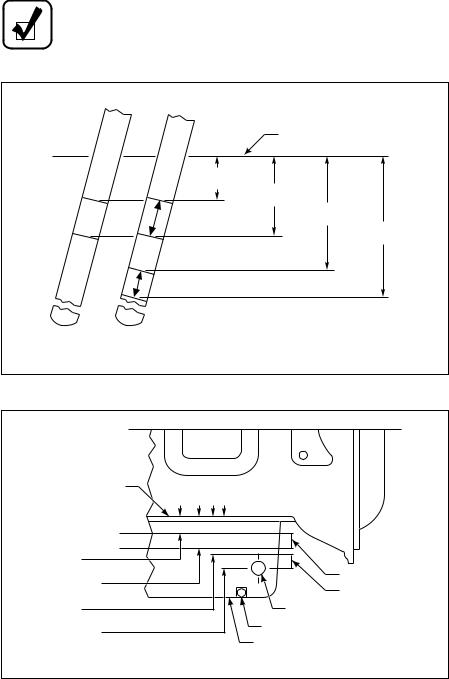
NOTE: The ADD and FULL dimensions on earlier dipsticks coincide with the HOT RUN band dimensions on later dipsticks.
ADD
TRANS |
IN |
NEUTRAL |
|
NEUTRAL |
OIL |
|
|
|
|
® |
|
HOT |
|
|
|
IDLE |
DEXRON |
|
|
CHECK |
IN |
|
|
FULL |
|
|
AT |
USE |
|
|
|
|
HOT |
RUN |
|
|
|
COLD |
RUN |
|
|
TOP OF OIL PAN
0.50 in.
(12.7 mm) 1.00 in.
(25.4 mm)
1.50 in.
(38.1 mm)
1.80 in.
(45.7 mm)
NOTE: This illustration is not a template, placement of markings will vary according
EARLIER LATER to the installation angle of the dipstick tube.
MODELS MODELS
V03004
Figure 1–1. Typical Dipstick Markings
TOP OF OIL PAN |
|
|
EARLIER |
|
|
MODELS |
|
|
FULL |
|
|
ADD |
LATER |
|
0.50 in. |
MODELS |
|
(12.7 mm) |
HOT RUN |
|
1.00 in. |
||
COLD RUN |
||
(25.4 mm) |
||
1.50 in. |
FILL TUBE ADAPTER HOLE |
|
(38.1 mm) |
DRAIN PLUG |
|
1.80 in. |
||
OIL PAN |
||
(45.7 mm) |
||
|
V03005 |
Figure 1–2. How Fluid Levels Are Established
2
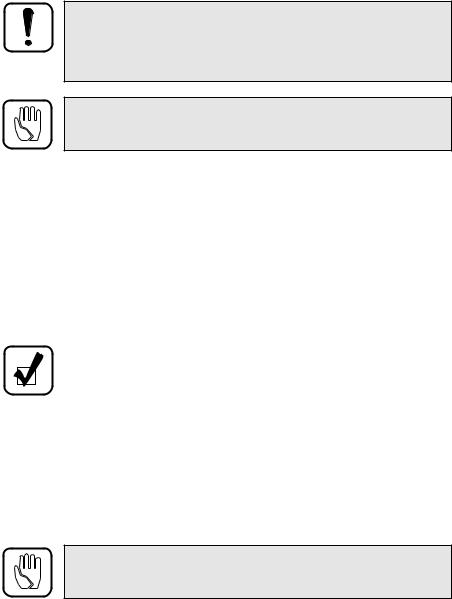
1–4. FLUID CHECK PROCEDURE
WARNING: When checking the fluid level, be sure the transmission is in N (Neutral) or P (Park), parking brake and/or emergency brakes are set and properly engaged, and the wheels are chocked.
Unexpected and possible sudden vehicle movement may occur if these precautions are not taken.
CAUTION: Dirt and foreign matter must not be permitted to enter the fluid system. It can cause valves to stick, cause undue wear of transmission parts, or clog passages.
Always check the fluid level a minimum of two times. Consistency is important in maintaining accuracy. If inconsistent readings persist, check the transmission breather and the vent hole in the dipstick fill tube to ensure they are clean and free of debris. The vent hole is located on the underside of the fill tube just below the seal of the dipstick cap.
Check the fluid level by the following procedures and record any abnormal fluid level, milky appearance, or any trace of coolant in the fluid on your maintenance records. Refer to Paragraph 1–8.
a. Cold Check
NOTE: The only purpose of the Cold Check is to determine if the transmission has enough fluid to be safely operated until a Hot Check can be made.
•Park the vehicle on a level surface, set the parking brake and/or emergency brakes, and chock the vehicle wheels.
•Run the engine at 1000–1500 rpm for one minute to purge air from the system. Return engine to idle, then shift to D (Drive) and then to R (Reverse) to fill the hydraulic circuits with fluid. Then, shift to N (Neutral) or P (Park) and allow the engine to idle (500–800 rpm). The sump temperature should be between 60–120°F (16–49°C).
CAUTION: The fluid level rises as sump temperature increases. DO NOT fill above the COLD RUN band if the transmission fluid is below normal operating temperature.
•Clean around the end of the fill tube before removing the dipstick. Wipe the dipstick clean and check the fluid level. If the fluid on the dipstick is within the COLD RUN band, the level is satisfactory for operating the transmission
3
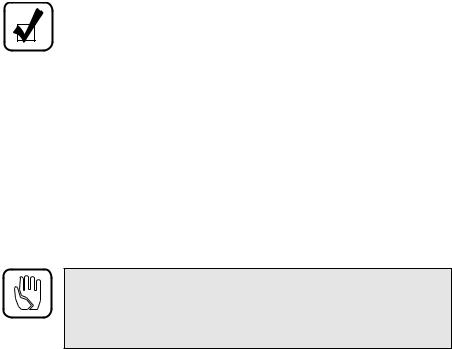
until the fluid is hot enough to perform a HOT RUN check. If the fluid level is not within the COLD RUN band, add or drain fluid as necessary to bring the level to the middle of the COLD RUN band.
•Perform a hot check at the first opportunity after the normal operating sump temperature 160–200°F (71–93°C) is reached.
b.Hot Check
NOTE: The fluid level rises as the temperature increases. To ensure an accurate check, operate the transmission until the sump fluid temperature is 160–200°F (71–93°C); converter-out temperature is 180–220°F (82–104°C).
•Park the vehicle on a level surface and shift to N (Neutral) or P (Park). Set the parking brake and/or emergency brakes and chock the vehicle wheels. Allow the engine to idle (500–800 rpm).
•Wipe the dipstick clean and check the fluid level. The safe operating range is any level within the HOT RUN band on the dipstick. If the level is not within this band, add or drain fluid as necessary to bring the level to the top of the HOT RUN band. Approximately 1 quart (1 liter) of fluid is required to raise the level from the bottom to the top of the band.
1–5. KEEPING FLUID CLEAN
CAUTION: Containers or fillers that have been used to handle any antifreeze or engine coolant solution must not be used for transmission fluid. Antifreeze and coolant solutions contain ethylene glycol which, if introduced into the transmission, can cause the clutch plates to fail.
It is absolutely necessary that the fluid put into the transmission be clean. Fluid must be handled in clean containers, fillers, etc., to prevent foreign material from entering the transmission. Lay dipstick in a clean place while filling the transmission.
1–6. RECOMMENDED AUTOMATIC TRANSMISSION FLUID AND VISCOSITY GRADE
•Hydraulic fluids (oils) used in the transmission are important influences on transmission performance, reliability, and durability. DEXRON® -III fluids are recommended for on-highway applications. Type C-4 fluids are recommended for severe duty and off-highway applications.
4
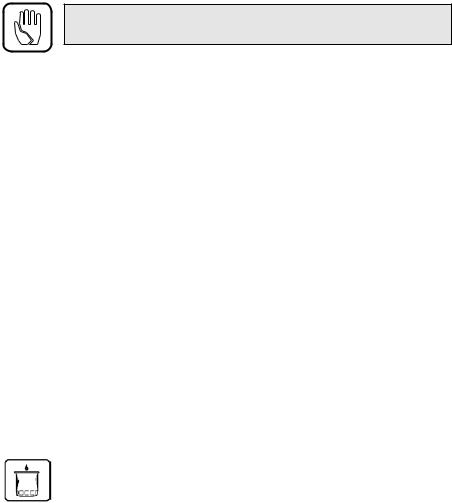
•Some DEXRON® fluids are also qualified as Type C-4 fluids. To ensure the fluid is qualified for use in Allison transmissions, check for a DEXRON® or C-4 fluid license, or approval numbers on the container, or consult the lubricant manufacturer. Consult your Allison Transmission dealer or distributor before using other fluid types; fluid types such as Type F and universal farm fluids may or may not be properly qualified for use in your Allison transmission.
CAUTION: Disregarding minimum fluid temperature limits can result in transmission malfunction or reduced transmission life.
•When choosing the optimum viscosity grade of fluid to use, duty cycle, preheat capabilities, and/or geographical location must be taken into consideration. Table 1–1 lists the minimum fluid temperatures at which the transmission may be safely operated. Preheat with auxiliary heating equipment or by running the vehicle with the transmission in N (Neutral) or P (Park) for a minimum of 20 minutes before attempting range operation.
Table 1–1. Transmission Fluid Operating Temperature Requirements
Viscosity Grade |
Ambient Temperature Below Which Preheat |
||
|
Is Required |
||
|
|
||
|
|
|
|
|
Fahrenheit |
|
Celsius |
|
|
|
|
SAE 0W-20 (Arctic) |
–31 |
|
–35 |
|
|
|
|
DEXRON® -III |
–22 |
|
–30 |
SAE 10W |
–4 |
|
–20 |
|
|
|
|
SAE 15W-40 |
5 |
|
–15 |
|
|
|
|
SAE 30 |
32 |
|
0 |
|
|
|
|
SAE 40 |
50 |
|
10 |
|
|
|
|
1–7. FLUID AND FILTER CHANGE INTERVALS
Fluid and filter change frequency is determined by severity of transmission service and by the filter equipment installed. Table 1–2 is a general guide. More frequent changes may be required when operations are subject to high levels of contamination or overheating.
5
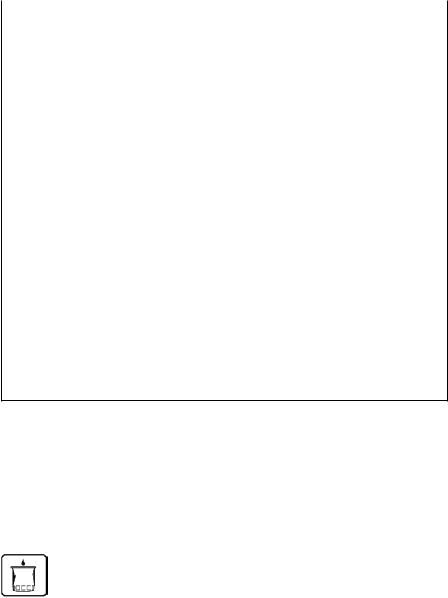
Table 1–2. Fluid and Filter Change Intervals
AT |
Fluid Change |
Internal Sump |
External Auxiliary |
|
Transmission |
Filters** |
|||
|
|
|||
|
|
|
|
|
|
Paper Filter: |
Paper Filter: at |
After first 5000 |
|
|
25,000 miles |
each fluid change |
miles (8 000 km) |
|
|
(40 000 km) |
interval |
and at 25,000 miles |
|
On-Highway, |
or 12 months* |
Brass Filter: |
(40 000 km) |
|
Light-Duty |
Brass Filter: |
50,000 miles |
or 12 months, |
|
|
50,000 miles |
(80 000 km) with |
thereafter* |
|
|
(80 000 km) |
no time limit |
|
|
|
or 24 months* |
|
|
|
|
|
|
|
|
|
Paper or Brass |
Paper Filter: at |
After first 5000 |
|
|
Filter: 25,000 |
each fluid change |
miles (8 000 km) |
|
On-Highway, |
miles (40 000 km) |
interval |
and at normal fluid |
|
Heavy-Duty, |
or 12 months* |
Brass Filter: |
change intervals, |
|
Retarder |
|
50,000 miles |
thereafter* |
|
|
|
(80 000 km) with |
|
|
|
|
no time limit |
|
|
|
|
|
|
|
|
Paper or Brass |
Paper or Brass |
After first 500 hours, |
|
Off-Highway |
Filter: 1000 hours |
Filter: at each fluid |
and at normal fluid |
|
max or 12 months* |
change interval |
change intervals |
||
|
||||
|
|
|
thereafter* |
|
|
|
|
|
* Whichever occurs first.
** When an Allison high-efficiency filter is used, the change interval is until the Change Filter light indicates the filter is contaminated or until it has been in use for three years, whichever occurs first. No mileage restrictions apply.
A brass screen sump filter is available for all AT 500 and AT 1500 Series transmissions for both the shallow pan and the deep pan models. To convert an AT deep pan 5.3 inches (135 mm) with paper filter to the brass screen filter configuration, a service conversion kit is required. Refer to Service Information Letter (SIL) 5-TR-93 (latest revision).
1–8. FLUID AND FILTER CHANGE PROCEDURE
a. Drain
•The transmission should be at operating temperature to assist draining.
•Remove the drain plug from the pan. Disconnect the fill tube from the pan only if required.
•Examine the drained fluid for evidence of contamination (refer to Paragraph 1–9).
6

•Remove the pan and filter. Discard the pan gasket, filter, and filter tube sealring. Clean the pan.
•Remove, clean, and reinstall the governor feed line screen in the control valve body.
•For models with the shallow pan (3.8 inch, 97 mm), insert a new sealring into the filter tube. Install the filter tube into the main housing. Install a new brass screen sump filter onto the filter tube. Bolt the filter onto the transmission.
Replace the pan gasket and reattach the pan (reference Transmission Service Manual). Tighten the pan screws to 10–15 lb ft (14–20 N·m).
NOTE: To prevent leakage, pan washer-head screws must retain a 5 lb ft (7 N·m) minimum torque after gasket sets.
•Install the drain plug into the pan and tighten it to 15–20 lb ft (20–27 N·m). If removed, install the fill tube and tighten the fill tube fitting in the pan boss to 65–75 lb ft (88–102 N·m).
•For models with the deep pan (5.3 inch, 135 mm), insert a new sealring into the filter tube. Install the filter tube into the main housing. When converting from paper filter to brass screen filter, and for servicing the pan with the brass screen filter, attach filter bracket (see SIL 5-TR-93). Install the brass screen sump filter onto the filter tube. Bolt the filter to the filter bracket. Replace the pan gasket and reattach the pan (reference Transmission Service Manual). Tighten the pan screws to 10–15 lb ft (14–20 N·m).
NOTE: To prevent leakage, pan washer-head screws must retain a 5 lb ft (7 N·m) minimum torque after gasket sets.
•Install the drain plug into the pan and tighten it to 15–20 lb ft (20–27 N·m). If removed, install the fill tube and tighten the fill tube fitting in the pan boss to 65–75 lb ft (88–102 N·m).
•If an external auxiliary filter is present, replace the filter element. Refer to Table 1–2 for replacement intervals.
b. Fill
•Refill the transmission. (Refer to Paragraph 1–6, and to Table 1–3.)
•The refill amount is less than the initial fill because some of the fluid remains in the external circuits and transmission cavities.
•Check the fluid level as outlined in Paragraph 1–4.
7
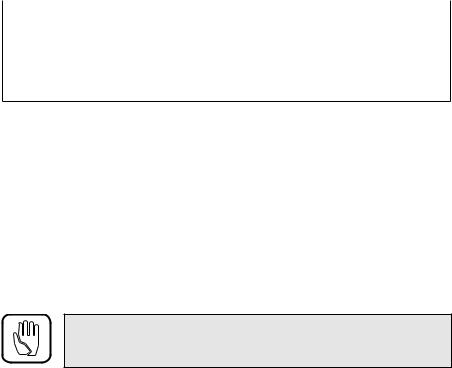
Table 1–3. Transmission Fluid Refill Capacities
Pan Type |
Quantity |
|
|
Shallow pan — 3.8 inches (97 mm) |
9 U.S. qt. (8.5 liters)* |
|
|
Deep pan — 5.3 inches (135 mm) |
16 U.S. qt. (15 liters)* |
|
|
*The amount of transmission fluid shown in the following chart does not include the amount required to fill the external circuits.
1–9. FLUID CONTAMINATION
a. Examine at Fluid Change
At each fluid change, examine the fluid which is drained for evidence of dirt or engine coolant (water). A normal amount of condensation will emulsify in the fluid during operation of the transmission. However, if there is evidence of coolant, check the cooler (heat exchanger) for leakage between the cooler and fluid areas. Fluid in the coolant side of the cooler (heat exchanger) is another sign of leakage. This, however, may indicate leakage from the engine oil system.
b. Metal Particles
CAUTION: If excessive metal contamination has occurred, replacement of the cooler and replacement of all bearings within the transmission is recommended.
Metal particles in the fluid (except for the minute particles normally trapped in the filter) indicate damage has occurred in the transmission. When these particles are found in the sump, the transmission may need to be disassembled and closely inspected to find the source. Metal contamination requires complete disassembly of the transmission and cleaning of all internal and external circuits, cooler, and all other areas where the particles could lodge. (Refer to Paragraph 1–10, Auxiliary Filter.)
c. Coolant Leakage
If engine coolant leaks into the transmission hydraulic system, take immediate action to prevent malfunction and possible serious damage. Completely disassemble, inspect, and clean the transmission. Remove all traces of the coolant and varnish deposits resulting from coolant contamination. Replace friction clutch plates contaminated with ethylene glycol.
8

d. Fluid Analysis
Transmission protection and fluid change intervals can be optimized by monitoring oxidation according to the tests and limits shown in Table 1–4. Consult your local telephone directory for fluid analysis firms. Use one fluid analysis firm as results from various firms cannot be accurately compared. Refer to the Technicians’ Guide for Automatic Transmission Fluid (GN2055EN) for additional information.
Table 1–4. Fluid Oxidation Measurement Limits
Measurement |
Limit |
|
|
Viscosity |
±25% change from new fluid |
Carbonyl absorbance |
+0.3 A*/0.1 mm change from new fluid |
Total acid number |
+3.0 change from new fluid |
Solids |
2% by volume maximum |
|
|
* A = Absorbance units. |
|
|
|
1–10. AUXILIARY FILTER
If a condition occurs that introduces debris into the transmission hydraulic system, a complete cleanup of the cooler and lines is recommended.
Because repeated cleaning and flushing may not remove all debris, installation of an auxiliary filter in the cooler-out line (between cooler and transmission) is recommended. This recommendation applies whether the transmission is overhauled or replaced by a new or rebuilt unit.
CAUTION: DO NOT install an auxiliary filter in the AT 500R primary cooler circuit. This reduces retarder effectiveness. An auxiliary filter in the secondary cooler circuit is sufficient.
If any doubt exists about the cleanup of the cooler, replace the cooler.
The auxiliary filter should have at least a 40-micron filter element or finer and a maximum filter pressure drop of 3 psi (21 kPa) at 4.5 gpm (17 liters/minute) at 180˚F (82˚C). The maximum external circuit pressure drop must not exceed 35 psi (241 kPa) at 4.5 gpm (17 liters/minute) at operating temperature, in N (Neutral), and at 2400 rpm.
9
